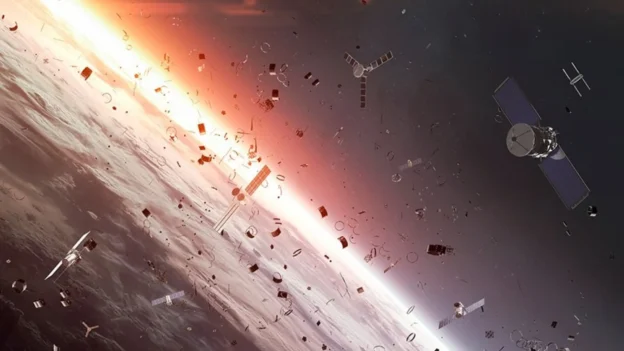The space surrounding the Earth is becoming a high-speed landfill. From obsolete satellites to rocket fragments, debris in orbit poses a growing risk to active space missions. active space missions. Now, a team of researchers at Tohoku University in Japan has proposed a practical solution based on plasma propulsion.
A plasma engine designed to brake debris without contact
Instead of directly capturing the debris, as many current proposals do, the new approach uses an electrodeless thruster that emits two jets of plasma in opposite directions. One of them is directed toward the space debris. space debrisgenerating a force that slows it down. The other compensates for the recoil of the system, keeping the cleanup satellite stable.
Kazunori Takahashi, an associate professor in the university’s School of Engineering, is leading this development. His proposal has been tested in simulated laboratory conditions and recently published in Scientific Reports.
One of the most outstanding technical elements is the use of a magnetic field called “cusp”, which makes it possible to contain the plasma more efficiently by intensifying the pressure applied to the target.
Thanks to this technique, the system achieves a deceleration rate three times higher than that achieved in previous configurations. According to the tests, the fragments could leave orbit in approximately 100 days, reducing their threat to other devices.
Another important advantage is that the system can operate using argon, an abundant and inexpensive gas, in contrast to the more expensive fuels used in other propellants. This makes the model more economically accessible.
This non-contact alternative would avoid the risks associated with missed captures or secondary collisions. The strategy aligns with a critical need: keeping low-Earth orbit free of technological junk that would hinder future space operations.
The breakthrough marks an important step towards autonomous space cleaning systems capable of operating safely, efficiently and sustainably. Although still in the experimental stage, the principle has demonstrated concrete results that could lay the groundwork for future real missions.
Source and Photo: Tohoku University

